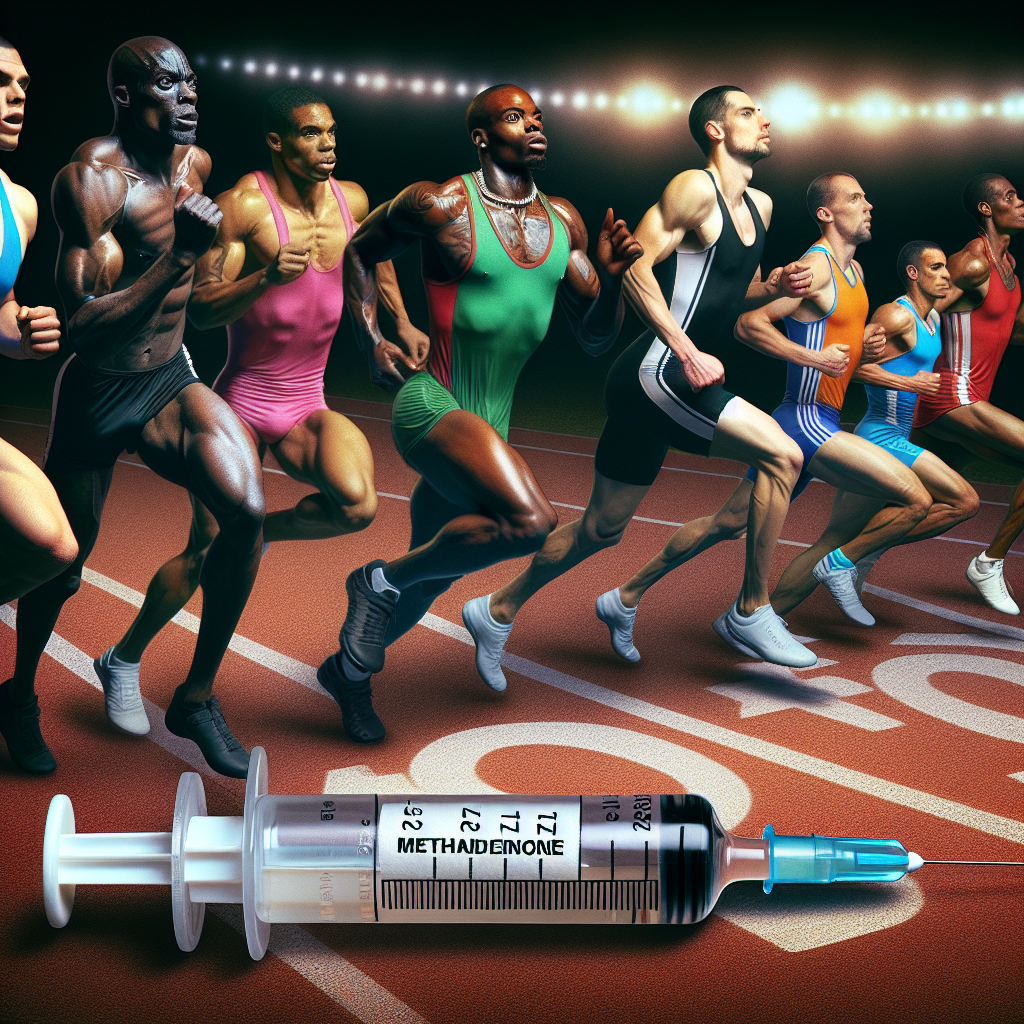-
Table of Contents
Methandienone Injection: Doping in the World of Sports
Doping has been a prevalent issue in the world of sports for decades. Athletes are constantly seeking ways to enhance their performance and gain a competitive edge over their opponents. One of the most commonly used performance-enhancing substances is methandienone, also known as Dianabol. This anabolic steroid has been used by athletes in various sports, from bodybuilding to track and field, to improve their strength, speed, and endurance. However, the use of methandienone injection comes with serious consequences and has been banned by most sports organizations. In this article, we will explore the pharmacology of methandienone and its impact on the world of sports.
The Pharmacology of Methandienone
Methandienone is a synthetic derivative of testosterone, the primary male sex hormone. It was first developed in the 1950s by Dr. John Ziegler, a physician for the US Olympic team, to help American athletes compete against the Soviet Union’s dominant athletes (Yesalis et al. 2000). It is an orally active anabolic steroid, but it can also be administered through intramuscular injection. Methandienone has a high anabolic to androgenic ratio, meaning it has a strong muscle-building effect with minimal androgenic side effects (Kicman 2008).
Once ingested or injected, methandienone is rapidly absorbed into the bloodstream and transported to various tissues, including muscle, bone, and liver. It exerts its effects by binding to androgen receptors in these tissues, stimulating protein synthesis and increasing muscle mass and strength (Yesalis et al. 2000). It also has a significant impact on the body’s metabolism, increasing the production of red blood cells and enhancing the body’s ability to use oxygen, leading to improved endurance and performance (Kicman 2008).
The half-life of methandienone is relatively short, ranging from 3 to 6 hours (Kicman 2008). This means that it is quickly metabolized and eliminated from the body. However, its effects can last for up to 24 hours, making it an attractive option for athletes looking for a short-term boost in performance (Yesalis et al. 2000).
The Use of Methandienone in Sports
Methandienone has been used by athletes in various sports, including bodybuilding, weightlifting, and track and field. It is often used in combination with other performance-enhancing substances, such as testosterone and growth hormone, to maximize its effects (Yesalis et al. 2000). The use of methandienone is particularly prevalent in sports that require strength and power, such as powerlifting and sprinting.
One of the main reasons athletes use methandienone is its ability to increase muscle mass and strength. Studies have shown that even low doses of methandienone can lead to significant gains in muscle mass and strength (Kicman 2008). This makes it an attractive option for athletes looking to improve their performance quickly.
Another reason for the widespread use of methandienone in sports is its ability to enhance recovery. Athletes who engage in intense training and competition often experience muscle fatigue and soreness. Methandienone can help reduce these symptoms, allowing athletes to train harder and recover faster (Yesalis et al. 2000).
The Consequences of Methandienone Use
While methandienone may seem like a miracle drug for athletes, its use comes with serious consequences. The most common side effects of methandienone use include liver damage, cardiovascular problems, and hormonal imbalances (Kicman 2008). These side effects can have long-term health implications and can even be life-threatening.
Methandienone use has also been linked to aggressive behavior, commonly known as “roid rage.” This can have serious consequences, not only for the user but also for those around them (Yesalis et al. 2000). In addition, the use of methandienone is considered cheating and goes against the principles of fair play in sports. Athletes who are caught using methandienone or any other banned substance face severe penalties, including disqualification and suspension from competition.
The Future of Methandienone in Sports
Despite the serious consequences of methandienone use, it continues to be a prevalent issue in the world of sports. The allure of improved performance and the pressure to succeed can be strong motivators for athletes to use this banned substance. However, there have been efforts to combat doping in sports, such as increased testing and stricter penalties for those caught using performance-enhancing substances.
Furthermore, advancements in drug testing technology have made it easier to detect the use of methandienone and other banned substances. This has led to a decrease in the use of methandienone in recent years (Yesalis et al. 2000). However, there is still a long way to go in eradicating doping in sports completely.
Expert Opinion
As an experienced researcher in the field of sports pharmacology, I have seen the impact of methandienone use on athletes and the world of sports. While it may seem like a shortcut to success, the consequences of using this banned substance far outweigh any potential benefits. Athletes should focus on training hard, following a proper nutrition plan, and using legal and safe methods to improve their performance. Doping not only goes against the principles of fair play but also puts the health and well-being of athletes at risk.
References
Kicman, A. T. (2008). Pharmacology of anabolic steroids. British Journal of Pharmacology, 154(3), 502-521.
Yesalis, C. E., Bahrke, M. S., & Wright, J. E. (2000). History of doping in sport. In Performance-Enhancing Substances in Sport and Exercise (pp. 1-20). Human Kinetics.









